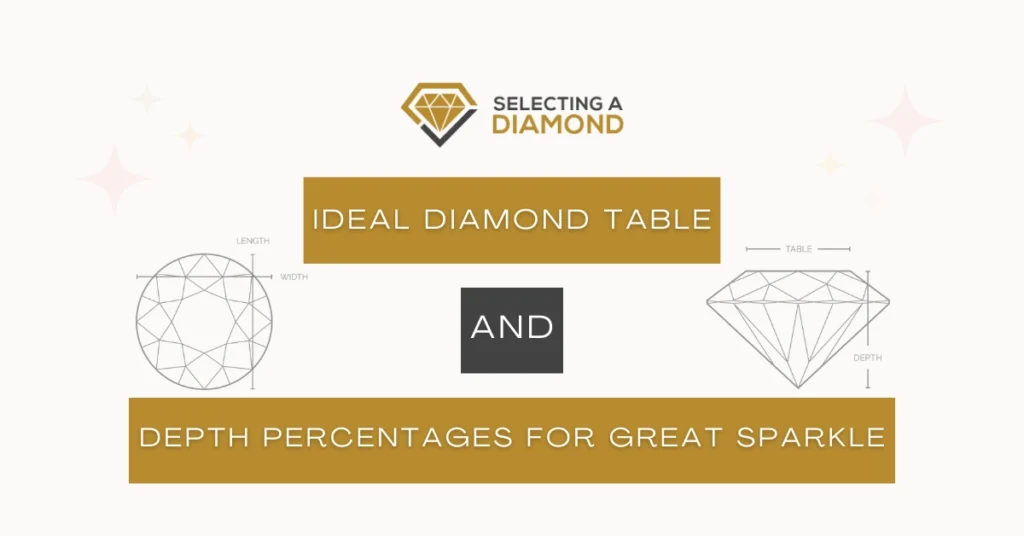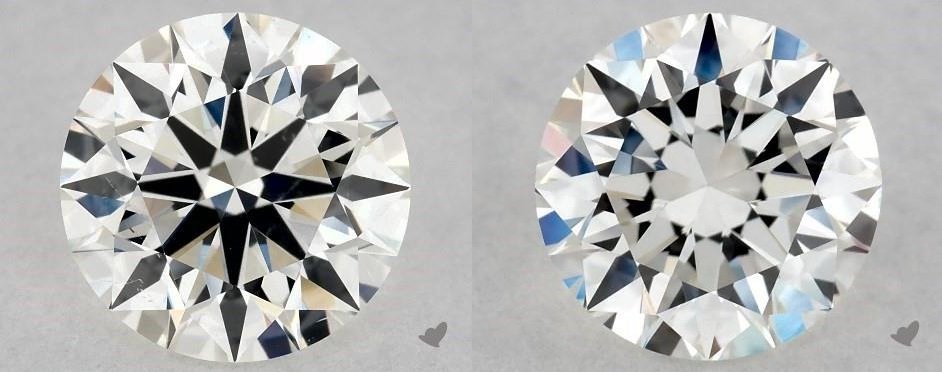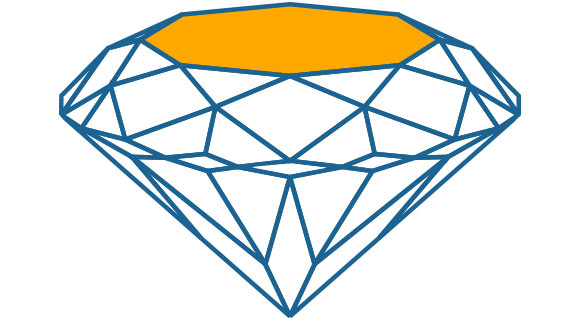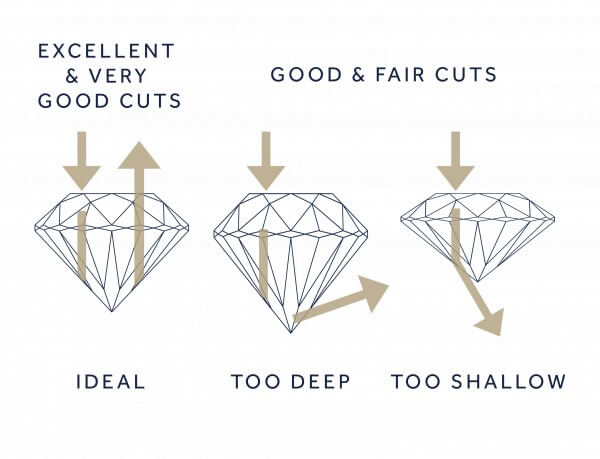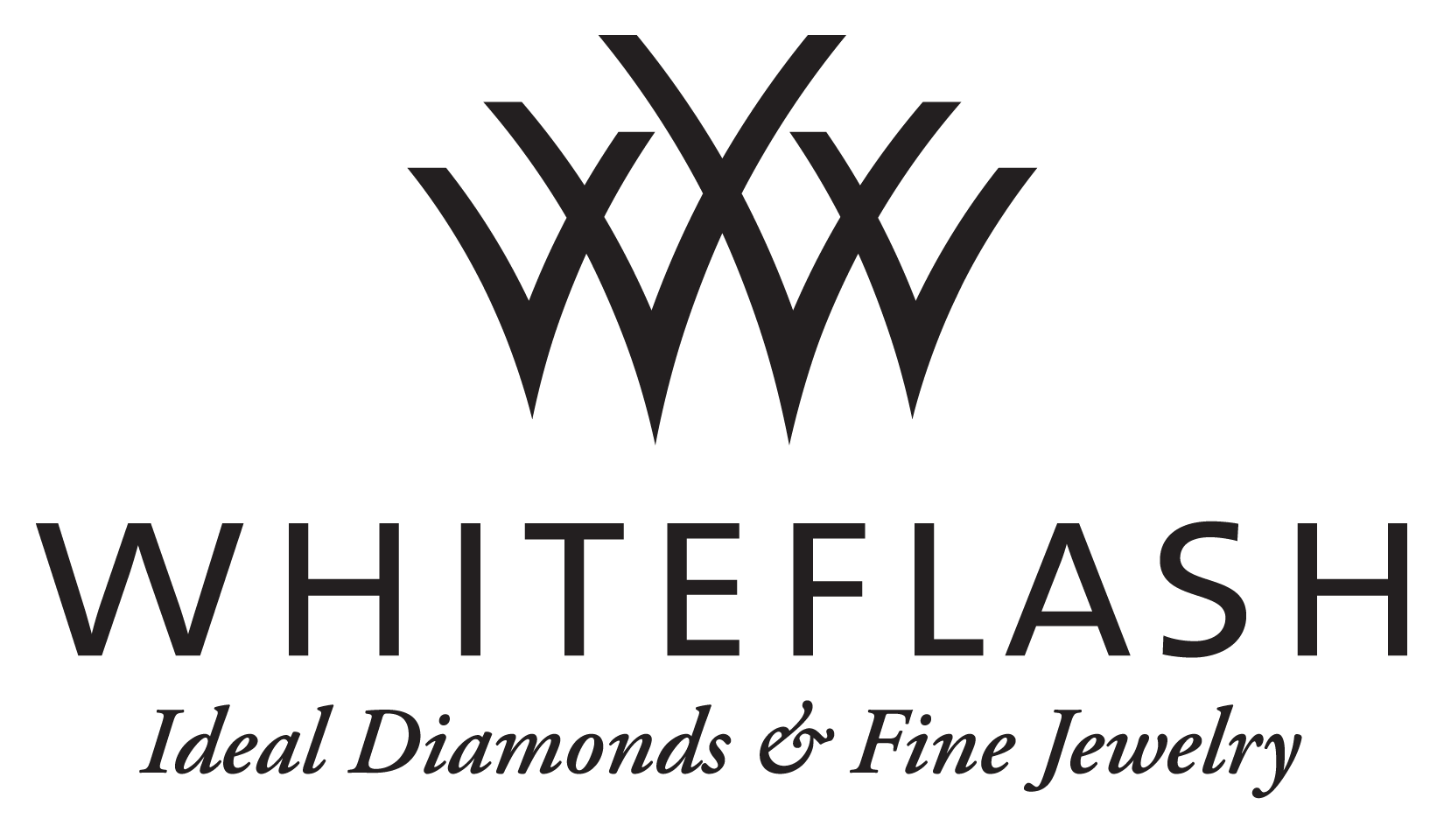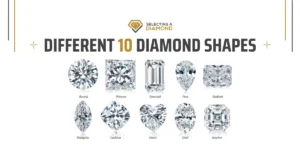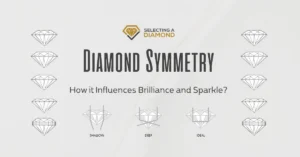We may earn a commission when you purchase through our affiliate links, at no extra cost to you. This helps support our work and allows us to continue providing unbiased, expert diamond advice.
Summary in a few lines:
The table and depth percentages of a diamond are crucial metrics that, in tandem, determine a diamond’s proportionality, significantly influencing its cut grade.
The diamond table refers to the topmost facet that meets the eye when gazing down upon the gem.
Variations in table size—as a percentage of the diamond’s width—dictate how light interacts with and travels through the diamond, a factor paramount to its brilliance and fire.
Likewise, the depth percentage, whether higher or lower, is a determinant of the diamond’s cut quality. It governs the diamond’s profile, potentially rendering it excessively deep or inappropriately shallow, which can diminish its sparkle and overall aesthetic.
Lower/higher table & depth percentages are rarely found in ideal cut grades, here is a diamond with low depth percentage (57.6%) and very high table percentage (64%).
Then compare it with this stunning diamond (same carat, color, clarity but for sure better cut) and see how they look completely different.
Let’s break this down in more details.
Achieving the ideal combination of diamond specifications is essential to secure a breathtakingly beautiful stone. It requires careful consideration of various factors, among which the table and depth percentages are of paramount importance.
Notably, the table and depth not only have a profound impact on the diamond’s cut but may also alter its grade.
A diamond may receive a lower or higher cut grade based on these percentages, underlining their significance in the valuation of a diamond’s quality and desirability.
Incorporating these elements with precision can elevate the allure and value of a diamond, making the understanding of table and depth percentages indispensable for connoisseurs and enthusiasts alike.
Let’s dig a little deeper and understand what this means.
What are Diamond Table & Depth?
How can someone with no real experience in diamonds approximately find out these measurements? How to determine what a fair price would look like for a stone with a specific table and depth percentages?
So far, we have learned that the only way to guarantee a great sparkle and light reflection is by getting an ideal cut! And technically-speaking, table and depth percentages are very important factors contributing to the diamond overall cut grade.
We really can’t just think how we can explain “almost everything” in this website without the greatest imaging technology provided by James Allen!
Let’s look at this diamond for example, and then compare it to this one, here are magnified images of both:
Let’s ignore the clarity and the Hearts & Arrows that you can notice in the first diamond -to the left- for a second and let’s focus only on the tables for both!
It’s clearly notable these diamond views from the top are different, the top facet for both diamonds vary a lot, although they are both of the same cut (True Heart isn’t a standard cut, but that’s a different story).
What is Diamond Table?
The ‘diamond table’ refers to the prominent top facet of the diamond, which, regardless of the gemstone’s facet count, stands as its most expansive facet. This pivotal feature not only defines the diamond’s silhouette but is also instrumental in shaping its scintillating brilliance and light performance
It’s important to delineate that the ‘table’ is not synonymous with the entirety of the stone’s upper surface — a common misconception. The term ‘width’ captures this broader view.
Instead, the table refers specifically to the flat, uppermost facet of the diamond, as clearly demarcated in this image:
Being the largest facet of the diamond, the table has the role of refracting light rays entering the diamond and creating a reflection of the same light into the eyes of the observer.
When you examine the diamond’s interaction with light, you’ll notice that this light is the reflection that goes off the diamond’s table facet mainly, and then off the crown facets.
It’s worth mentioning that the more symmetric they are (the crown facets), the higher their ability is to reflect light.
When the light performance is relatively low, it means that something is not adding up in the function of the table!
Despite the fact that brilliance and light performance are not solely dependent on the table, still, the diamond table plays the main character and is responsible for carrying out light ray refraction, as well as implementing the number of light rays and sparkle that is being visibly reflected.
In diamond cutting practices, the table percentage is usually determined by calculating the presenting size ratio of the table, to that of the girdle diameter of the whole stone; we will be seeing more on the ideal percentages later in this post.
What is Diamond Depth Percentage?
For a better understanding of diamond depth, we need to know that there are two depth measurements:
The first deals with the measurement of the actual depth of the stone and it’s measured in millimeters.
It represents the height of the diamond, from its culet to its table. This is shown as ‘measurements’ in a grading report, and this measurement is the one illustrated in the image we saw above.
The second depth measurement -which is the most common- is percentage of the depth. It is a measure of the depth in relation to the width of the diamond’s table, and as the name implies, it is a percentage (%100 percent), here is how it’s calculated:
Depth Percentage (%) = Depth (in millimeters) / Diameter (in millimeters)
How Table & Depth Affect Light Reflection?
Diamond table and depth clearly get two front seats in the discussions related to Diamond Cut & Light reflection; considering the fact that the physical diamond shape -which determines the beauty and ideal design of a shaped diamond sample- is hugely impacted by those two distinct characteristics!
As for the light reflection (and refraction) part, we need to get clear on the fact that both the Table & Depth determine the amount of light that will pass through the diamond.
Keep in mind that the diamond’s light reflection is what accounts for its glitter and its shine, therefore, you can understand why it is important to have sufficient light (and correspondingly sufficient reflection) passing through the diamond.
It will also interest you to know that when a diamond’s depth is very shallow, the light will hit the peak of the facet at quite a small angle and pass through the facet smoothly, and then will easily escape out through the bottom of the diamond.
Another case would be the light entering the diamond from the peak of the facet and hitting it at also a small angle; which will cause the light to refract and will in return cause an early escape of light out through the bottom of the diamond.
Whenever you want to understand how Cut, Table & Depth affect light reflection, just remember this image:
Diamond Table & Depth Percentages for Round Diamonds
Make this table your bible when referring to the best diamond table and depth percentages! And whenever you’re inspecting a diamond, make sure to compare its table & depth to these grades to get a good idea of how ideal they are.
It’s important to mention that this table shows the ideal/recommended table & depth percentages for round diamonds shapes:
Grade | Table Percentage | Depth Percentage |
|---|---|---|
Excellent (Ideal) | 54 - 57% | 59 - 62.5% |
Very Good | 52 - 53% or 58 - 60% | 58 - 58.9% or 62.6 - 63.5% |
Good | 51% or 61 - 64% | 57.5 - 57.9% or 63.6 - 64.1% |
Fair | 50% or 65 - 69% | 56.5 - 57.4% or 64.2 - 65% |
Poor | <50% or >60% | <56.5% or >65% |
Just to confirm, we always recommend getting an ideal/excellent cut grade since it stands on top of 4Cs in order of importance, so the figures for very good & lower cuts here in the table are just FYI.
Ideal Diamond Table & Depth Percentages for All Diamond Shapes
There are more than 10 popular shapes other than the round, and if you’re looking in that range of diamonds, here are the general ideal table & depth percentages for these popular cuts (or shapes, whatever you prefer to call them):
Princess Cut
Table: A table percentage of 65-75% is optimal for a princess cut diamond to enhance its unique brilliance and scintillation.
Depth: An ideal depth of 64-75% helps to create a profound interplay of light, characteristic of this modern cut.
Oval Cut
Table: For an oval cut, a table percentage ranging from 53-63% is desirable, which supports a great balance of brightness and fire.
Depth: The depth should ideally be between 58-62% to optimize the stone’s elegant elongation and its reflective qualities.
Marquise Cut
Table: With a table percentage of 53-63%, a marquise cut diamond boasts a larger perceived size and an amplified brilliance.
Depth: A depth percentage of 58-62% allows for a delightful spread of light, giving this cut its signature boat-like shape.
Pear Cut
Table: A table percentage ranging from 53-63% is recommended for pear-shaped diamonds to accentuate their unique teardrop appearance.
Depth: Maintaining a depth between 58-62% aids in achieving a balanced luminosity that complements the cut’s singular beauty.
Cushion Cut
Table: A cushion cut diamond benefits from a table percentage of 61-67%, which supports a luscious blend of fire and brilliance.
Depth: The depth, ideally set between 61-67%, provides the plush, pillow-like appearance that this cut is known for.
Emerald Cut
Table: The emerald cut diamond’s table should ideally be 61-69%, which allows for a clear, open table that highlights the cut’s clarity.
Depth: A depth of 61-67% is considered optimal for ensuring the long, lean facets deliver their hallmark mirrored effect.
Asscher Cut
Table: An Asscher cut diamond’s table percentage should ideally be between 60-68%, allowing for a mesmerizing depth and hall-of-mirrors effect.
Depth: The optimal depth percentage is also 61-67%, which underscores the cut’s geometric symmetry and windmill-like reflections.
Radiant Cut
Table: For radiant cut diamonds, a table percentage of 61-69% ensures a lively interplay of light within the stone’s many facets.
Depth: An ideal depth of 61-67% brings forth a vibrant sparkle, characteristic of this cut’s blended brilliance.
Heart Cut
Table: A heart-shaped diamond benefits from a table percentage between 56-62%, which amplifies its romantic silhouette and brilliance.
Depth: The depth should ideally range from 58-62%, providing a balance that enhances the cut’s charming outline and its scintillating display.
Remember, these percentages are guides that can help in selecting a diamond, but they’re just part of the story.
The overall appearance of a diamond—including its sparkle, symmetry, and how it interacts with light—is influenced by the interplay of all its proportions and angles, as well as the skill of the cutter.
Summary
Diamond cuts are considered a vital factor in diamond price-fixing, and regular diamond stakeholders know the importance of that. This is quite an effective way of determining what to expect ahead of time especially if the buyer seeks to work with a stipulated budget.
Once you’re ready to shop for your diamond, we strongly encourage you to pay attention to the diamond table & depth and to make sure their values make sense, and then, compare these values to the table we demonstrated above.
This -besides having a ideal cut- will make sure that you get a diamond that will sparkle, reflect most of the light that goes through it, and present an unmatched brilliance.
Still not sure where to buy your diamond?
We always recommend shopping diamonds online and created a Full guide to shop diamonds like a Pro.
Among online retailers, here are our favorite stores click their logo to visit store
-
James Allen:
Our favorite online store, best diamond imaging technology available today, comes with the largest collection with more than half a million loose diamonds.
-
Blue Nile:
Widest collection of loose diamonds of all sizes, great imaging technology for most of their inventory (hundreds of thousands of diamonds), great customer support.
-
Whiteflash:
Home Of A CUT ABOVE® Super Ideal Diamonds, they stand out from the crowd by offering premium diamonds cuts, tailored to those who love the details, at great prices too.

